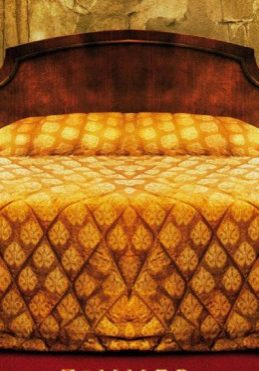“Sometimes you can’t get rid of bad memories… just like a room.” – 1408
Welcome to the enigmatic and chilling world of 1408, a 2007 horror movie directed by Mikael Håfström, based on the terrifying tale by master storyteller Stephen King. This spine-tingling journey follows Mike Enslin, played by John Cusack, a skeptical author who debunks supernatural phenomena in his books but finds himself trapped in a malevolent hotel room with a dark history. What seems like another routine investigation into the paranormal rapidly descends into a mind-bending battle for survival against an indomitable, spectral force.
Whispers and Screams: Crafting Atmospheric Terror
In a genre often over-reliant on jump scares and gore, 1408 takes a more subtle, psychological route to horror. It is the masterful manipulation of atmosphere and tone that truly unnerves. From the opening scenes, the building tension is palpable, like the charged air before a storm. The film employs suspense and an escalating sense of dread rather than outright monsters or gore. Håfström is adept at unsettling the audience, creating an inexplicable discomfort that grows with each passing minute in the dread-filled room.
Cinematography and Visuals: Corridors of the Mind
The cinematography of 1408 serves as a conduit for terror. The clever use of lighting and color palettes—instances of oppressive darkness punctuated by garish, almost feverish neon—contribute to the hallucinogenic feel of the room’s interior. Camera angles are often skewed, walls and space distort, crafting a visual representation of psychological disintegration. Special effects remain understated, with seamless transitions that often leave you questioning what’s reality. It’s a haunted house experience woven into film, executed without the need for overt visual shocks.
Sound Effects: Whispers and Cries
Sound—or sometimes its deliberate absence—is a character in the room of 1408. Whether it’s the chillingly placid voice of the hotel operator or the sudden, jarring din of the room’s alarm clock, auditory experiences become a tool to chisel away at both the protagonist’s and audience’s composure. The soundtrack, sometimes melodic and mournful, at other times jarring and discordant, compleates the sinister atmosphere. It’s an orchestration of dread that demonstrates the power of aural elements in horror storytelling.
Pawns in Room’s Game: The Human Element
The heart of 1408 beats with the performances, particularly Cusack’s portrayal of Enslin. The characters, while limited in number, are fully developed and convincingly convey varied reactions to terror. Cusack’s descent from confident debunker to a man grappling with his own sanity and mortality feels authentic, his performance amplifying the sense of horror. Samuel L. Jackson’s brief but impactful role as the hotel manager adds gravitas to the peril, providing a grounded juxtaposition to the surreal threat the room presents.
Horror Unboxed: What Haunts Us?
1408 straddles subgenres, entwining psychological and supernatural horror. It harkens to the traditional “haunted space” trope yet challenges it by removing the common escape – there’s no running from this room. The film relies on a fusion of mind games and brief, intense visuals to terrify, making the room’s menace feel insurmountable. It’s less about the shocks and more about the slow unraveling of the psyche—the mechanics are not of gore but of terror that’s deeply personal to Enslin’s backstory.
Reflections in the Doorknob: Theme and Resonance
While 1408 first appears as a standard supernatural skirmish, delve deeper and it’s clear that the film taps into broader themes of loss, grief, and the inescapability of one’s personal demons. This layer adds to the film’s impact, offering viewers morsels of existential dread to chew on long after the credits roll. It uses horror as a prism to reflect on how we deal with the ghosts of our past—whether buried regrets or unresolved pain, making the experience haunting in more ways than one.
Inescapable Torment or Psychological Liberation?
As a horror movie, 1408 excels in unsettling the mind rather than turning the stomach. It deals in unease and psychological disarray, proving effective for the most part, although it may leave gore-hounds yearning for more visceral thrills. The film is innovative in how it bends reality, often leaving you doubtful of your perceptions—suitable for any horror aficionado who delights in cerebral terror. Yet, despite its intricate construction, it’s accessible enough to entice casual viewers, especially those intrigued by the supernatural or seeking a thought-provoking scare.
1408 can stand shoulder-to-shoulder with other psychological horror stalwarts like The Shining or The Others, offering a contemporary twist on the haunted room concept.
A Bewildering Escape?
With a taut narrative and an emphasis on psychological horror, 1408 secures a spot somewhere between mainstream jump-scare flicks and art-house horror. It’s a movie that can chill to the core without resorting to cheap tricks—a rarity in the genre. For those willing to check into the Dolphin Hotel’s Room 1408, be prepared; checkout is not guaranteed. Mild caution is advised for sensitive viewers due to disturbing themes and some graphic visuals. If you’re in search of a horror film that lingers like a shadow in the back of your mind, then I wholeheartedly recommend you reserve a viewing of 1408.




